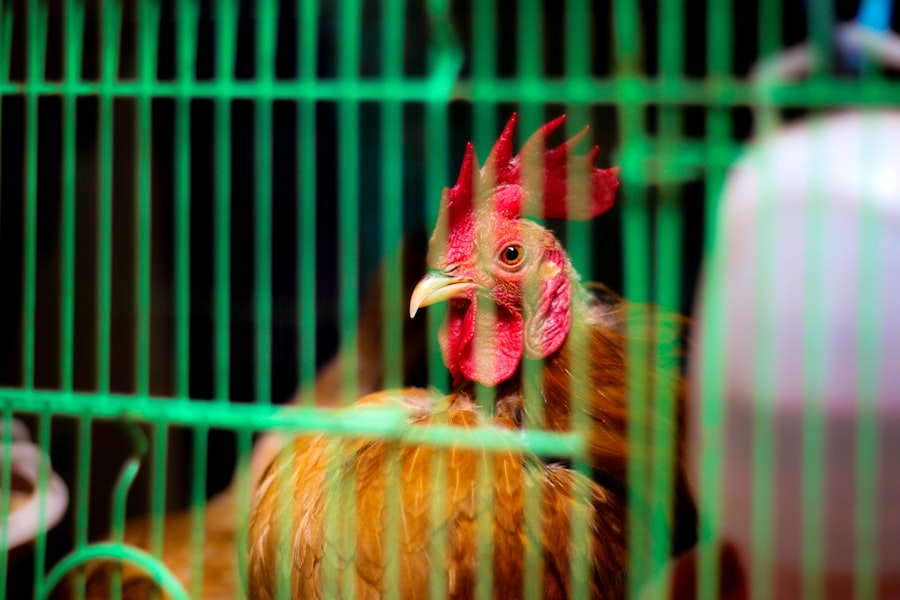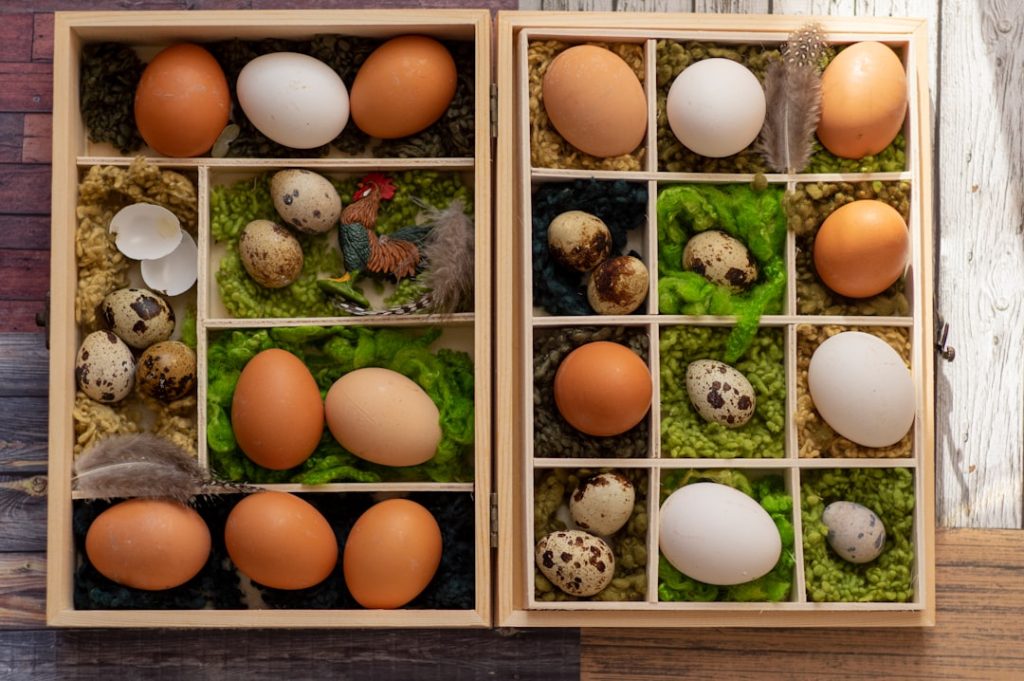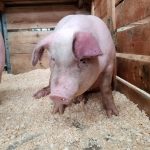Hawks are predatory birds renowned for their exceptional vision and swift hunting capabilities. They are attracted to areas with abundant small prey, including chickens. Understanding hawk behavior is essential for developing effective chicken protection strategies.
Hawks are diurnal, being most active during daylight hours. Their superior eyesight allows them to spot prey from considerable distances. Known for their speed and agility, hawks are formidable hunters.
They typically hunt by swooping down from elevated positions, catching prey by surprise. As opportunistic hunters, hawks will exploit any easily accessible food source. These birds are territorial and defend their hunting grounds.
Hawks are highly adaptable, thriving in various habitats from open fields to suburban areas. They are generally solitary hunters, preferring to hunt alone rather than in groups. Consequently, a single hawk can pose a significant threat to a small chicken flock.
Hawks’ territorial nature means that chicken owners can implement measures to deter these predators from entering their property. By comprehending hawk behavior, poultry keepers can develop more effective strategies to safeguard their chickens from these skilled predators.
Table of Contents
- 1 Implementing Physical Barriers
- 2 Utilizing Visual Deterrents
- 3 Providing Adequate Shelter for Chickens
- 4 Using Sound Deterrents
- 5 Practicing Good Husbandry Techniques
- 6 Seeking Professional Assistance
- 7 FAQs
- 7.1 What are some effective methods for keeping hawks away from my chickens?
- 7.2 Are there any natural deterrents for hawks?
- 7.3 What are some signs that a hawk is targeting my chickens?
- 7.4 Is it legal to harm or kill hawks to protect my chickens?
- 7.5 What should I do if a hawk has already killed one of my chickens?
Key Takeaways
- Hawks are territorial and will attack chickens to protect their territory and find food.
- Physical barriers such as fences and netting can help prevent hawks from accessing chicken coops.
- Visual deterrents like scarecrows and shiny objects can help deter hawks from approaching chicken areas.
- Providing adequate shelter such as covered areas and hiding spots can help chickens avoid hawk attacks.
- Sound deterrents like predator calls or loud noises can help scare off hawks from chicken areas.
- Good husbandry techniques such as keeping the coop clean and providing enough food and water can help reduce the risk of hawk attacks.
- Seeking professional assistance from wildlife experts or poultry specialists can provide valuable advice on protecting chickens from hawks.
Implementing Physical Barriers
Implementing Physical Barriers
One effective way to safeguard chickens from hawk attacks is by installing physical barriers around the chicken coop and run. A sturdy fence around the perimeter of the coop and run can prevent hawks from swooping down and snatching up chickens. The fence should be at least 6 feet tall and made of durable materials such as wire mesh or hardware cloth to prevent hawks from breaking through.
Additional Layers of Protection
Covering the top of the chicken run with netting or wire mesh can provide an extra layer of protection against aerial attacks. This will prevent hawks from diving into the chicken run and grabbing chickens from above. Another physical barrier that can be implemented is the use of scare tape or reflective objects around the chicken coop and run.
Deterrent Methods
Hawks are known to be wary of shiny or reflective objects, so hanging strips of scare tape or aluminum foil around the perimeter of the coop can help deter them from approaching. Additionally, placing scarecrows or other large, intimidating objects near the coop can also help deter hawks from getting too close. By implementing physical barriers and deterrent methods, chicken owners can create a safer environment for their flock and reduce the risk of hawk attacks.
Utilizing Visual Deterrents
In addition to physical barriers, utilizing visual deterrents can also help protect chickens from hawk attacks. One effective visual deterrent is the use of predator eyes balloons or decoys. These are large balloons or decoys that are designed to resemble the eyes of a predator, such as an owl or hawk.
Placing these balloons or decoys around the chicken coop and run can help deter hawks from approaching, as they may mistake them for actual predators and avoid the area altogether. Another visual deterrent that can be used is the installation of motion-activated lights or sprinklers around the chicken coop. These devices can startle hawks and other predators when they approach, causing them to flee the area and leave the chickens unharmed.
Additionally, using reflective objects such as mirrors or CDs around the chicken coop can also help deter hawks. Hawks are known to be wary of shiny or reflective surfaces, so placing these objects strategically around the coop can help deter them from getting too close. By utilizing visual deterrents such as predator eyes balloons, motion-activated devices, and reflective objects, chicken owners can create a hostile environment for hawks and reduce the risk of attacks on their flock.
Providing Adequate Shelter for Chickens
Another important strategy for protecting chickens from hawk attacks is to provide them with adequate shelter and hiding spots within their coop and run. This can include providing dense vegetation or shrubbery within the chicken run where chickens can seek cover if a hawk is spotted overhead. Additionally, providing multiple roosting spots within the coop at varying heights can also help chickens evade hawk attacks.
Hawks typically target chickens that are out in the open and easily accessible, so providing ample hiding spots within the coop and run can help reduce the risk of attacks. Another way to provide adequate shelter for chickens is by using covered runs or enclosures. These structures provide an extra layer of protection for chickens by preventing hawks from swooping down and grabbing them from above.
Covered runs can be made of wire mesh or netting and should be tall enough to allow chickens to move around comfortably while also providing protection from aerial attacks. By providing adequate shelter and hiding spots for chickens within their coop and run, chicken owners can help reduce the risk of hawk attacks and create a safer environment for their flock.
Using Sound Deterrents
In addition to physical barriers and visual deterrents, using sound deterrents can also help protect chickens from hawk attacks. One effective sound deterrent is the use of predator calls or distress calls that mimic the sounds of injured or distressed animals. These calls can be played on a loop using a speaker system near the chicken coop and run to deter hawks from approaching.
The sounds of distressed animals can signal danger to hawks and other predators, causing them to avoid the area altogether. Another sound deterrent that can be used is the installation of wind chimes or bells around the chicken coop and run. The sound of these objects clanging together in the wind can help deter hawks by creating a noisy and unpredictable environment that they may find unsettling.
Additionally, using noise-making devices such as air horns or whistles can also startle hawks and cause them to flee the area. By using sound deterrents such as predator calls, wind chimes, and noise-making devices, chicken owners can create a hostile environment for hawks and reduce the risk of attacks on their flock.
Practicing Good Husbandry Techniques

Regular Maintenance and Inspection
Regularly inspecting the chicken coop and run for any signs of wear or damage is essential in maintaining a secure environment for chickens. Repairing any holes or weak spots in fences, netting, or other physical barriers is crucial in preventing hawks from gaining access.
Keeping the Area Clean and Supervising Free-Ranging Chickens
Keeping the area around the coop clean and free of debris can help reduce hiding spots for potential prey animals that may attract hawks. Additionally, supervising free-ranging chickens during peak hawk activity times, such as early morning or late afternoon, can help prevent potential attacks. By keeping a close eye on chickens while they are out in the open, chicken owners can quickly intervene if a hawk is spotted nearby.
Providing for Basic Needs
Providing ample food and water within the coop and run can help reduce the need for chickens to venture out into open areas where they may be more vulnerable to hawk attacks. By providing for their basic needs, chicken owners can encourage their flock to stay within the safety of the coop and run, reducing the risk of hawk attacks.
Seeking Professional Assistance
In some cases, despite best efforts, hawk attacks on chickens may persist. In such situations, seeking professional assistance may be necessary to effectively address the issue. Professional wildlife experts or pest control services may be able to provide additional insight into managing hawk predation on chickens and offer specialized solutions tailored to specific needs.
Professional assistance may involve installing more advanced deterrent systems such as electronic bird repellents or bird spikes that make perching areas less appealing to hawks. Additionally, wildlife experts may offer advice on habitat modification techniques that discourage hawks from frequenting areas where chickens are kept. Furthermore, seeking professional assistance may involve obtaining permits for non-lethal methods of hawk management if necessary.
Wildlife experts may also provide guidance on legal considerations related to managing hawk predation on chickens. In conclusion, protecting chickens from hawk attacks requires a multi-faceted approach that involves understanding hawk behavior, implementing physical barriers, utilizing visual and sound deterrents, providing adequate shelter for chickens, practicing good husbandry techniques, and seeking professional assistance when necessary. By combining these strategies, chicken owners can create a safer environment for their flock and reduce the risk of hawk attacks on their valuable birds.
If you’re looking for ways to protect your chickens from predators like hawks, you may also be interested in learning about the mating season for turkeys. Understanding the behavior of turkeys during their mating season can help you better prepare and protect your flock. Check out this article on mating season for turkeys to learn more.
FAQs
What are some effective methods for keeping hawks away from my chickens?
Some effective methods for keeping hawks away from your chickens include using netting or wire mesh to cover the chicken coop, installing scare devices such as reflective tape or predator decoys, and providing overhead cover for the chickens to hide under.
Are there any natural deterrents for hawks?
Some natural deterrents for hawks include planting tall trees or shrubs around the chicken coop to provide cover for the chickens, and allowing the chickens to free-range in areas with dense vegetation where hawks may have difficulty hunting.
What are some signs that a hawk is targeting my chickens?
Some signs that a hawk may be targeting your chickens include seeing a hawk circling overhead or perched nearby, finding feathers or remains of chickens in the vicinity, and observing the chickens behaving nervously or hiding.
Is it legal to harm or kill hawks to protect my chickens?
No, it is illegal to harm or kill hawks, as they are protected under the Migratory Bird Treaty Act. However, there are legal methods for deterring hawks from preying on your chickens, such as using scare devices or providing physical barriers.
What should I do if a hawk has already killed one of my chickens?
If a hawk has already killed one of your chickens, it is important to secure the remaining chickens in a safe and enclosed area, and take measures to deter the hawk from returning. You can also report the incident to your local wildlife authorities for further guidance.
Meet Walter, the feathered-friend fanatic of Florida! Nestled in the sunshine state, Walter struts through life with his feathered companions, clucking his way to happiness. With a coop that’s fancier than a five-star hotel, he’s the Don Juan of the chicken world. When he’s not teaching his hens to do the cha-cha, you’ll find him in a heated debate with his prized rooster, Sir Clucks-a-Lot. Walter’s poultry passion is no yolk; he’s the sunny-side-up guy you never knew you needed in your flock of friends!







